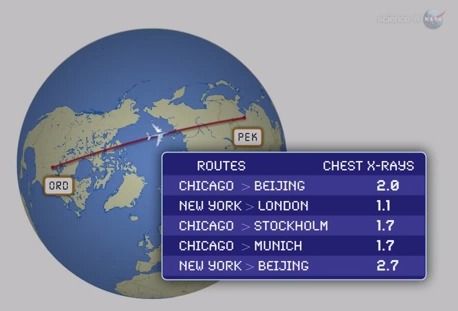
Professional pilots who fly at high altitudes for business or commercial aviation are exposed to as much radiation as workers in nuclear power plants, and that exposure is climbing as airlines fly polar routes more often, according to NASA. During a typical polar flight, pilots are exposed to the equivalent of two chest X-rays, an exposure rate 3 to 5 times higher than flights at lower latitudes. “Multiplied over the course of a career,” says NASA, “this can cause problems such as increased risk of cancer and possibly cataracts.” The space agency is working on its models for predicting the intensity of radiation so flight planners can alter course to avoid the most intense radiation events.
A research report, forthcoming in the journal Space Weather, compares NASA’s radiation predictions to actual measurements aboard aircraft. “The results are encouraging,” said Chris Mertens, a senior research scientist at NASA Langley Research Center. “But we still have work to do.” Mertens said the goal of the effort is to adopt a simple-to-understand, timely report similar to weather forecasts. The polar flights are popular because they can save up to $40,000 per flight in fuel costs, while altering course to avoid a polar radiation storm can cost as much as $100,000. Improved forecasts could “help the airlines to make the right decision” to protect the health of pilots and passengers, according to NASA.


































